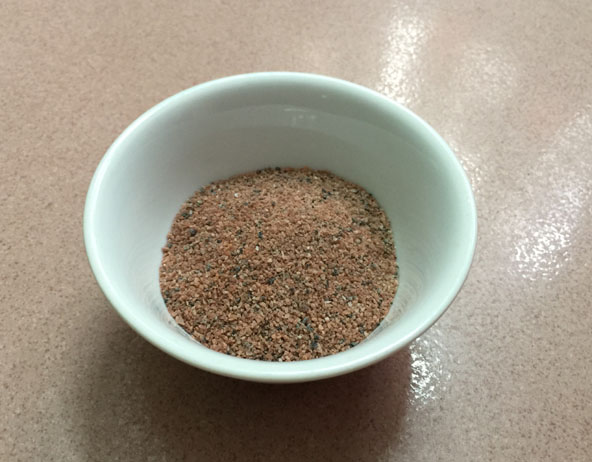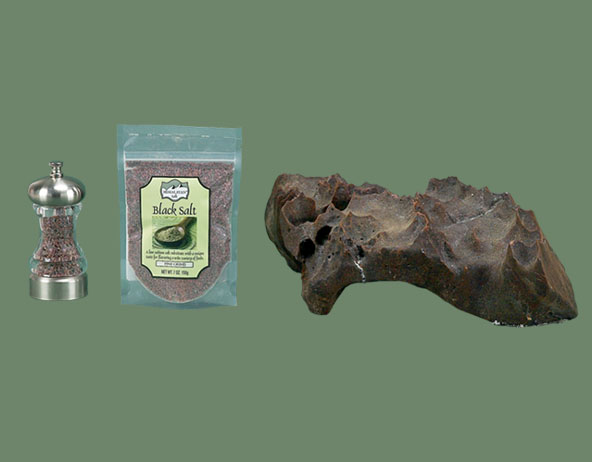Himalayan Black Salt is known by many different names including the following: Kala Namak, Sulemani Namak, Black Salt, Kala Loon, Black Indian Salt
Himalayan Salt ranges in Pakistan, Nepal, India and Bangladesh. It can also be harvested from the North Indian salt lakes in the Sambhar, Didwana and Mustang areas of Nepal. This type of salt is commonly used as a condiment throughout South Asia, known for its dark color and pungent smell. The smell is due to the salt’s high concentration of sulfur.
Himalayan Black Salt was traditionally transformed from its raw form into a new form for commercial purposes using a reductive chemical process that involved firing the salt for 24 hours. During firing, the salt was sealed in a ceramic jar along with charcoal, stored and aged. This preparation method is partially what gives the salt its black color. In its raw form, however, this type of salt still has a brownish pink hue due to the presence of impurities and various trace minerals.
Chemical composition
Himalayan Black Salt, like Himalayan Pink Salt, is largely comprised of sodium chloride. The difference between the two lies in the trace minerals and impurities. The first one contains trace amounts of sodium sulphate, sodium bisulfate, sodium bisulfate, sodium sulphide, iron sulfide and hydrogen sulfide. The sodium chloride concentration is what gives it a salty taste while the iron sulphide provides the dark brownish red hue. All of the sulphur compounds in the salt give it a sulfuric smell and a savory taste.
Note: Hydrogen sulphide is a toxic compound in high concentrations but the concentration of this compound in this salt is not high enough to be dangerous for human consumption.
Uses

As you can see from the picture above, Himalayan Black Salt still has a largely pink color when it is ground into powder. It is only the raw form of the salt that maintains its dark brownish red color. This type of salt can be used in all of its forms for a variety of culinary purposes, particularly in South Asian cuisine. In India, Pakistan and Bangladesh, it is used as a condiment to flavor chutneys, salads, chaats, raitas and other dishes. In India, it is a key element in Chaat masala, a traditional spice blend.
In addition to its culinary uses, this salt also serves a variety of purposes in Ayurvedic medicine. It has been used as a laxative and digestive aid as well as to relieve gas and heartburn. When combined with other plant ingredients, this salt makes a good toothpaste and it has also been used to treat hysteria. In Jammu, a district in India, it has long been used to cure goiters.
We have this available on https://himalayansaltusa.com/gourmet-salt
